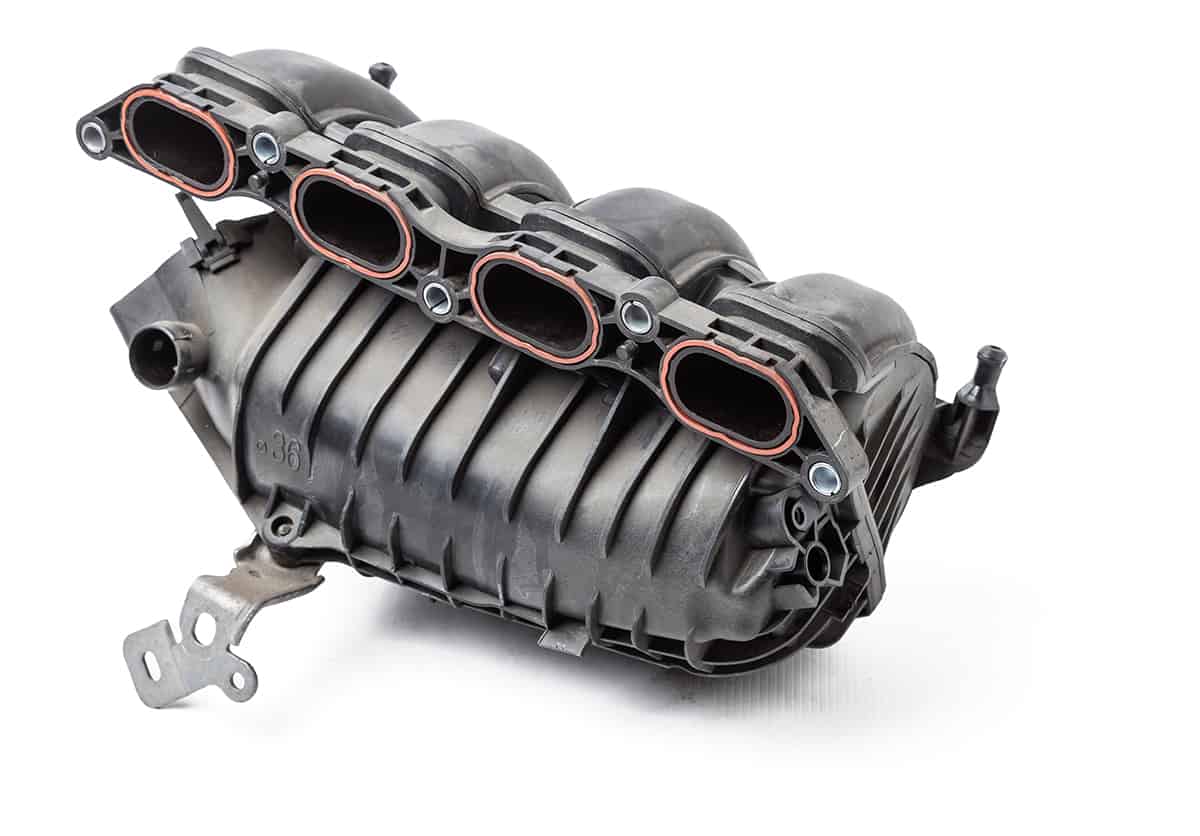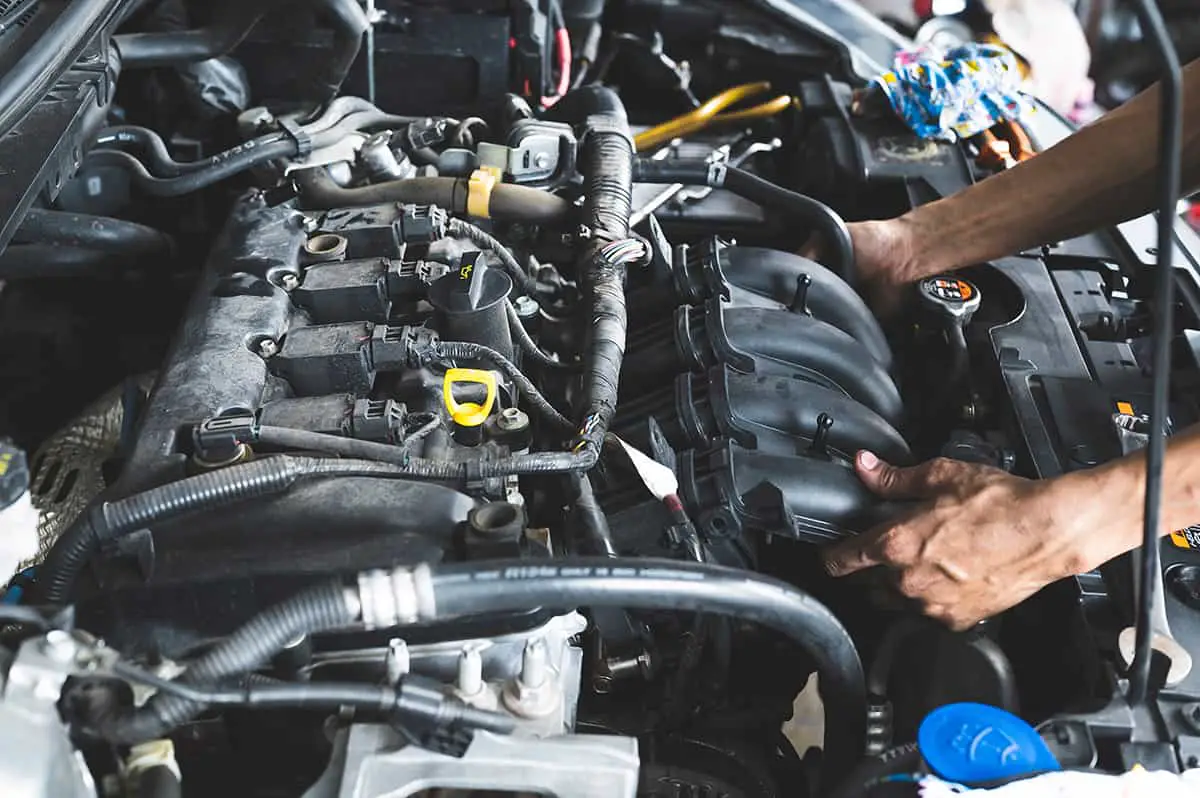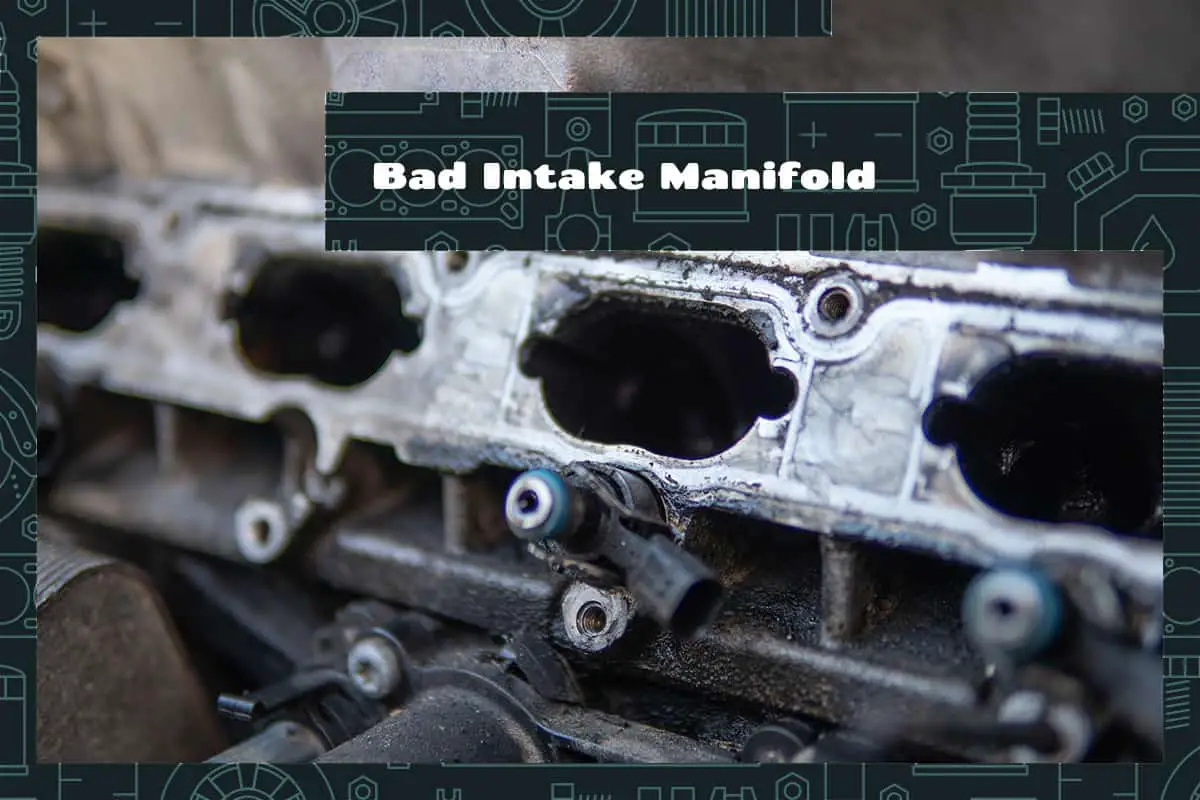Every car enthusiast knows the importance of an intake manifold. As the conduit that efficiently guides air from the car’s intake to its engine cylinders, a well-functioning intake manifold is key to optimal engine performance. However, like any other component of your vehicle, it is susceptible to wear and tear over time.
You can usually tell when your intake manifold is malfunctioning by looking for the following symptoms:
- Engine misfires
- Reduced engine performance
- Odd engine sounds
- Engine overheating
- Increased fuel consumption
In this comprehensive guide, we will take a close look at the intricacies of intake manifolds. We will identify the symptoms of a bad intake manifold, explore common causes, and look into solutions.
A Brief Look at the Intake Manifold

The intake manifold manages the amount of air that gets into the engine and mixing it with fuel. This mixture is ignited in the cylinders to produce the power that moves your car. Hence, the intake manifold directly impacts the power output and fuel efficiency of your vehicle.
This component begins its work once you start your car and the throttle body opens. Air rushes into the throttle body and moves into the intake manifold. In some engines, fuel injectors add fuel into this air stream, creating an air-fuel mixture right in the intake manifold (this is known as port fuel injection).
The manifold’s design ensures that this air or air-fuel mixture is evenly distributed to all cylinders. In a four-cylinder engine, for example, the intake manifold divides the incoming air or air-fuel mixture into four equal parts, so each cylinder receives an equal share. The mixture then moves into the cylinders, where it is ignited to generate power.
The process is continuous and synchronized with the engine’s operation. The intake manifold must work perfectly in sync with the other parts of the engine to maintain optimal performance.
Identifying the Symptoms of a Bad Intake Manifold
The symptoms of a bad intake manifold are often subtle, but by being observant and knowing what to look for, you can detect problems early. Here are common signs of a failing intake manifold:
- Engine Misfires: One of the most telling signs of a bad intake manifold is engine misfires. An issue with the intake manifold can disrupt the air-fuel mixture entering the cylinders, leading to an imbalance. This imbalance can cause the engine to misfire, which you might notice as a jolt or “miss” in the engine’s rhythm.
- Decreased Performance: If your car isn’t accelerating as quickly as it used to, or if it feels less powerful overall, this could be a sign of a problem with the intake manifold. A defective intake manifold can cause a decrease in engine power, leading to noticeable performance issues.
- Unusual Engine Sounds: If you start to hear a whistling or hissing sound coming from your engine, it might indicate a leak in the intake manifold. These noises are caused by air escaping through a crack or gap in the manifold.
- Poor Fuel Economy: A bad intake manifold can disrupt the balance of air and fuel in the engine, causing it to run inefficiently. This imbalance can lead to increased fuel consumption, so if you notice that your car is using more gas than usual, it might be due to a problem with the intake manifold.
- Engine Overheating: The intake manifold helps to regulate the temperature of the engine by circulating coolant. If there’s a leak or other problem with the intake manifold, it might cause your engine to overheat.
Risks and Consequences of a Bad Intake Manifold
A bad intake manifold can significantly impact your car’s performance. As the intake manifold is responsible for delivering the right amount of air or air-fuel mixture to each cylinder, any issue with it can disrupt the balance of this mixture. This disruption can lead to an array of performance issues, from poor acceleration and reduced power to increased fuel consumption and even engine damage.
A malfunctioning intake manifold can also cause your car’s “Check Engine” light to come on. Modern vehicles are equipped with an onboard diagnostic system (OBD) that continuously monitors various parts of the car, including the engine. If this system detects an issue with the intake manifold, it will trigger the “Check Engine” light on your dashboard.
If your car’s performance starts to deteriorate and you notice any of these symptoms, it’s crucial to have your car checked by a professional. Ignoring these signs can lead to further engine damage and more costly repairs down the line.
Causes behind a Bad Intake Manifold
Several factors can contribute to an intake manifold’s deterioration or failure. While some are a result of normal wear and tear, others can be due to poor maintenance or external influences.
- Heat Stress and Age: Over time, the intake manifold is exposed to high temperatures from the engine and the air-fuel combustion process. This constant heat exposure can cause the material of the manifold (often plastic or aluminum) to degrade and weaken, leading to cracks or warping. Age and heat stress are the most common causes of intake manifold problems.
- Faulty Gaskets: The intake manifold is sealed onto the engine with the help of gaskets. Over time, these gaskets can wear out, become brittle, and crack, leading to air or coolant leaks. A leaky gasket can cause poor engine performance and overheating.
- Vacuum Leaks: The intake manifold is part of the engine’s vacuum system, which plays a crucial role in the engine’s operation, including controlling the air-fuel mixture. A vacuum leak occurs when air is sucked into the engine through a breach in the intake manifold or its connections. The result is usually a lean mixture (too much air, not enough fuel), leading to poor engine performance, increased fuel consumption, and potential damage to the engine.
Repairing a Bad Intake Manifold

Deciding when to repair your intake manifold can be as simple as observing your vehicle’s performance and listening to your engine. If you notice any symptoms associated with a bad intake manifold, such as poor engine performance, increased fuel consumption, or unusual engine noises, it’s time to get your vehicle checked out.
The repair process may involve several steps:
Diagnosis: The mechanic will first use a diagnostic tool to read any error codes from your car’s onboard diagnostic system. This can provide insight into any issues with the intake manifold. They will also visually inspect the intake manifold and its connections for any visible signs of damage or leaks.
- Removal: If the intake manifold needs to be repaired or replaced, the mechanic will need to remove it. This process involves disconnecting various components, including the throttle body, fuel lines, and vacuum lines.
- Repair or Replacement: Depending on the issue, the mechanic may repair the intake manifold by sealing any cracks or leaks or replacing worn-out gaskets. However, in some cases, the entire intake manifold may need to be replaced.
- Reinstallation: Once the intake manifold is repaired or a new one is installed, the mechanic will reconnect all the components that were initially removed. They will then test the vehicle to ensure everything is working correctly.
DIY Repair: Is it Possible?
If you have a good understanding of automotive mechanics, you may consider repairing or replacing the intake manifold yourself. However, be aware that this is a complex task that involves working with many different engine components.
Here’s a general guide to help you replace a bad intake manifold, but if you don’t feel comfortable doing this, consult a professional mechanic.
Tools and Materials You’ll Need
- New intake manifold and gaskets
- Set of sockets and wrenches
- Screwdrivers
- Pliers
- Torque wrench
- Cleaner for intake manifold
- Gasket scraper
- Safety glasses and gloves
Steps to Replace the Intake Manifold
- Disconnect the Battery: For safety reasons, always disconnect the negative terminal of the battery before starting any work on your vehicle’s engine.
- Remove Components Connected to the Intake Manifold: This may include the air intake hose, throttle body, fuel lines, coolant lines, vacuum hoses, and electrical connections. Take note or photos of their positions to help with reinstallation later.
- Loosen and Remove the Intake Manifold Bolts: With a socket or wrench, gradually loosen the bolts securing the intake manifold to the engine. Ensure to do this in a crisscross pattern to prevent warping.
- Remove the Intake Manifold: Once all the bolts are removed, gently lift the intake manifold out of the engine bay. Be cautious not to drop any debris into the exposed intake ports on the engine.
- Clean the Intake Surface: Using the gasket scraper and cleaner, remove all the old gasket material and residue from the engine’s intake surface. Ensure it’s clean and smooth to create a good seal with the new gasket.
- Install the New Gasket and Intake Manifold: Position the new gasket on the intake surface of the engine, then carefully lower the new intake manifold onto it. Check alignment and adjust as necessary.
- Secure the Intake Manifold: Insert and hand-tighten the manifold bolts. Then, using a torque wrench, tighten them to the manufacturer’s specified torque in the correct sequence, typically a crisscross pattern.
- Reinstall the Removed Components: Reconnect all the components you removed in step 2. Double-check all connections to ensure they’re secure and in the right places.
- Reconnect the Battery and Test the Engine: Reconnect the negative terminal of the battery and start the engine. Listen for any unusual sounds and check for leaks. Also, pay attention to your vehicle’s performance for the next several drives.






